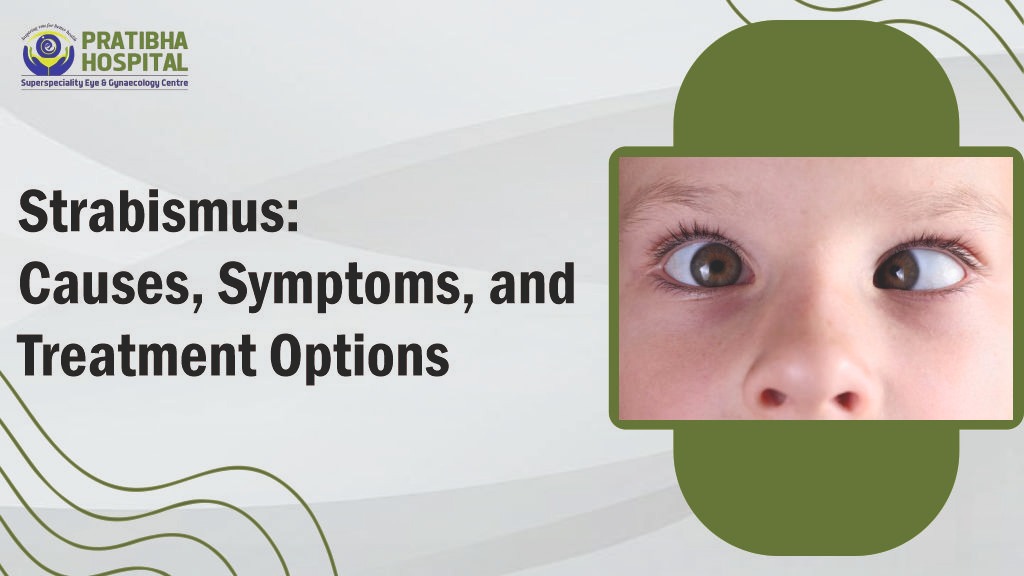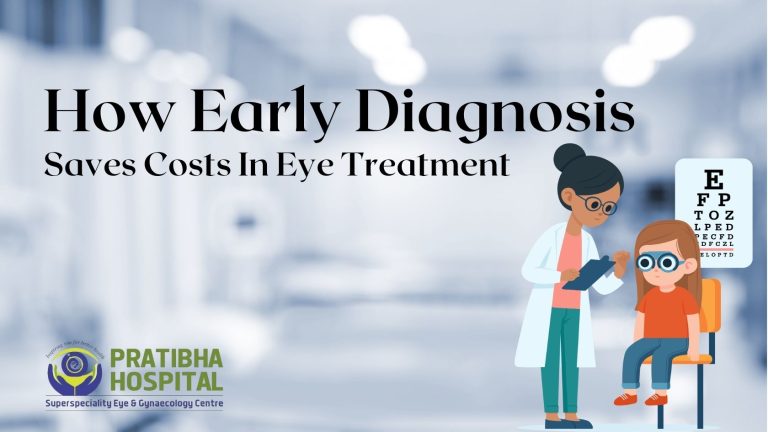Strabismus: Causes, Symptoms, and Treatment Options
Have you ever noticed someone’s eyes pointing in different directions? Sometimes one eye looks straight while the other turns inward, outward, upward, or downward. This condition is called Strabismus, commonly known as crossed eyes or squint.
It is more common in children but can also affect adults. The condition is not just cosmetic — it can affect vision, depth perception, and even confidence. The good news is that with proper diagnosis and treatment, most cases of strabismus can be corrected with an eye specialist.
What is Strabismus?
Strabismus is a condition in which the eyes do not align properly and look in different directions. While one eye focuses on an object, the other may turn inward (esotropia), outward (exotropia), upward (hypertropia), or downward (hypotropia).
This misalignment can be constant or come and go (intermittent). In children, strabismus usually develops before the age of 6, but it can also appear later in life due to injury, nerve problems, or other health conditions.
How Does Strabismus Affect Vision?
For normal vision, both eyes need to work together and send a single, clear image to the brain. In strabismus:
- The two eyes send different images.
- The brain may get confused and ignore the image from the misaligned eye (this is called suppression).
- Over time, this can lead to amblyopia (lazy eye), where the misaligned eye loses vision.
- In adults, suppression usually does not occur, so they may experience double vision.
This shows why early detection and treatment are very important.
Types of Strabismus
Strabismus is classified based on the direction of the eye turn and the pattern of occurrence.
1. Based on Eye Direction
- Esotropia (inward turn): The most common type, especially in children.
- Exotropia (outward turn): More noticeable when tired or looking at distant objects.
- Hypertropia (upward turn): One eye drifts upward.
- Hypotropia (downward turn): One eye drifts downward.
2. Based on Frequency
- Constant: Eye misalignment is always present.
- Intermittent: Appears sometimes, especially when tired or sick.
3. Based on Onset
- Congenital (infantile strabismus): Present from birth or within the first six months.
- Acquired strabismus: Develops later due to illness, trauma, or neurological issues.
Causes of Strabismus
Strabismus can develop for many reasons. Common causes include:
- Weak or imbalanced eye muscles – when the six muscles that control eye movement don’t work together properly.
- Nerve problems – if the nerves controlling eye movement are damaged.
- Refractive errors – high farsightedness (hyperopia) can cause eyes to cross.
- Genetics – family history increases risk.
- Medical conditions – Down syndrome, cerebral palsy, stroke, head injury, thyroid eye disease.
- Poor vision in one eye – the brain may stop using the weaker eye, leading to misalignment.
Symptoms of Strabismus
The symptoms depend on age and severity.
In children:
- Eyes pointing in different directions.
- Tilting or turning the head to see better.
- Squinting or closing one eye in sunlight.
- Poor depth perception (difficulty judging distance).
In adults:
- Double vision.
- Eye strain or headaches.
- Difficulty with reading or focusing.
- Decreased peripheral vision.
Sometimes, strabismus is not obvious, especially if it’s mild or intermittent. That’s why regular eye check-ups for children are important.
Complications if Left Untreated
If strabismus is ignored, it can lead to:
- Amblyopia (lazy eye): Permanent vision loss in one eye.
- Poor binocular vision: Difficulty seeing in 3D or judging distances.
- Psychological effects: Low self-esteem and lack of confidence, especially in children.
Diagnosis of Strabismus
An eye specialist (ophthalmologist or optometrist) will perform:
- Visual acuity test: To check clarity of vision.
- Refraction test: To identify refractive errors like farsightedness.
- Cover test: To detect eye misalignment.
- Corneal light reflex test: To see how light reflects on the cornea.
- Retinal exam: To rule out other eye diseases.
Early detection improves treatment outcomes. For children, eye exams are recommended at 6 months, 3 years, and before school.
Treatment Options for Strabismus
Treatment depends on the type, severity, and age of the patient.
1. Glasses (Spectacles)
For children with refractive errors, glasses can correct vision and help align the eyes.
2. Eye Patching
If amblyopia (lazy eye) is present, the stronger eye may be covered with a patch to force the weaker eye to work harder.
3. Vision Therapy (Eye Exercises)
Eye exercises prescribed by specialists can improve coordination and strengthen eye muscles.
4. Prisms
Special prism lenses can be added to glasses to reduce double vision.
5. Medications
In some cases, botulinum toxin (Botox) injections may be used to weaken overactive eye muscles.
6. Surgery
For severe cases, surgery may be done to adjust the position or length of the eye muscles. Surgery is usually safe and effective, though some patients may need more than one procedure.
Living with Strabismus
- Early treatment is key: Children treated early often achieve normal vision.
- Consistent follow-ups: Regular eye check-ups are necessary to track progress.
- Support and awareness: Parents should encourage children and avoid making them self-conscious.
- Healthy habits: Adequate sleep, balanced diet, and less screen time can support eye health.
Conclusion
Strabismus is more than just an eye misalignment — it affects vision, daily life, and confidence. Thankfully, with modern treatments like glasses, vision therapy, and surgery, it can be corrected at any age. The key lies in early detection, proper diagnosis, and timely treatment. If you or your child show signs of strabismus, consult an eye specialist without delay. With the right care, clear and aligned vision is very much possible.







